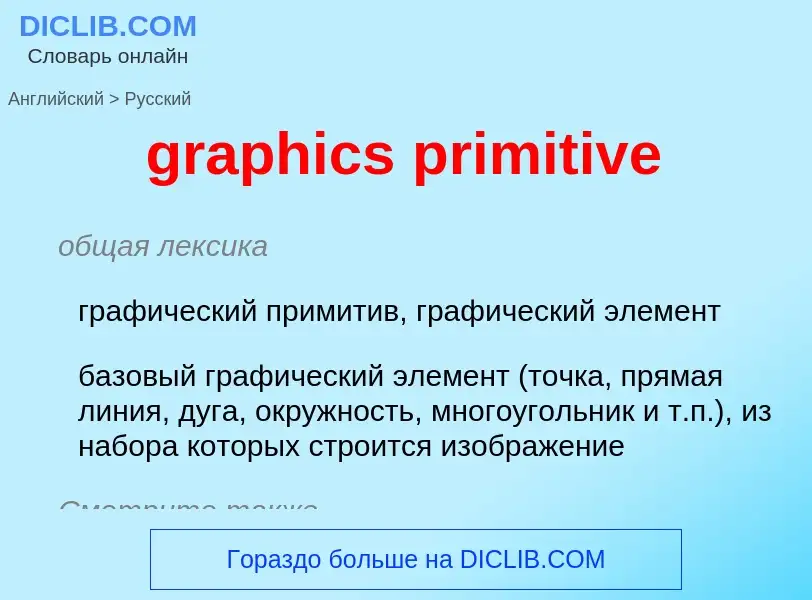ترجمة وتحليل الكلمات عن طريق الذكاء الاصطناعي ChatGPT
في هذه الصفحة يمكنك الحصول على تحليل مفصل لكلمة أو عبارة باستخدام أفضل تقنيات الذكاء الاصطناعي المتوفرة اليوم:
- كيف يتم استخدام الكلمة في اللغة
- تردد الكلمة
- ما إذا كانت الكلمة تستخدم في كثير من الأحيان في اللغة المنطوقة أو المكتوبة
- خيارات الترجمة إلى الروسية أو الإسبانية، على التوالي
- أمثلة على استخدام الكلمة (عدة عبارات مع الترجمة)
- أصل الكلمة
graphics primitive - ترجمة إلى إنجليزي
общая лексика
графический примитив, графический элемент
базовый графический элемент (точка, прямая линия, дуга, окружность, многоугольник и т.п.), из набора которых строится изображение
Смотрите также
математика
примитивное кольцо
общая лексика
примитивно-рекурсивный
تعريف
ويكيبيديا
In vector computer graphics, CAD systems, and geographic information systems, geometric primitive (or prim) is the simplest (i.e. 'atomic' or irreducible) geometric shape that the system can handle (draw, store). Sometimes the subroutines that draw the corresponding objects are called "geometric primitives" as well. The most "primitive" primitives are point and straight line segment, which were all that early vector graphics systems had.
In constructive solid geometry, primitives are simple geometric shapes such as a cube, cylinder, sphere, cone, pyramid, torus.
Modern 2D computer graphics systems may operate with primitives which are curves (segments of straight lines, circles and more complicated curves), as well as shapes (boxes, arbitrary polygons, circles).
A common set of two-dimensional primitives includes lines, points, and polygons, although some people prefer to consider triangles primitives, because every polygon can be constructed from triangles. All other graphic elements are built up from these primitives. In three dimensions, triangles or polygons positioned in three-dimensional space can be used as primitives to model more complex 3D forms. In some cases, curves (such as Bézier curves, circles, etc.) may be considered primitives; in other cases, curves are complex forms created from many straight, primitive shapes.

![A 3D [[torus]] prim created in [[Second Life]], an example of a parametric shape A 3D [[torus]] prim created in [[Second Life]], an example of a parametric shape](https://commons.wikimedia.org/wiki/Special:FilePath/Second Life torus prim.jpg?width=200)
